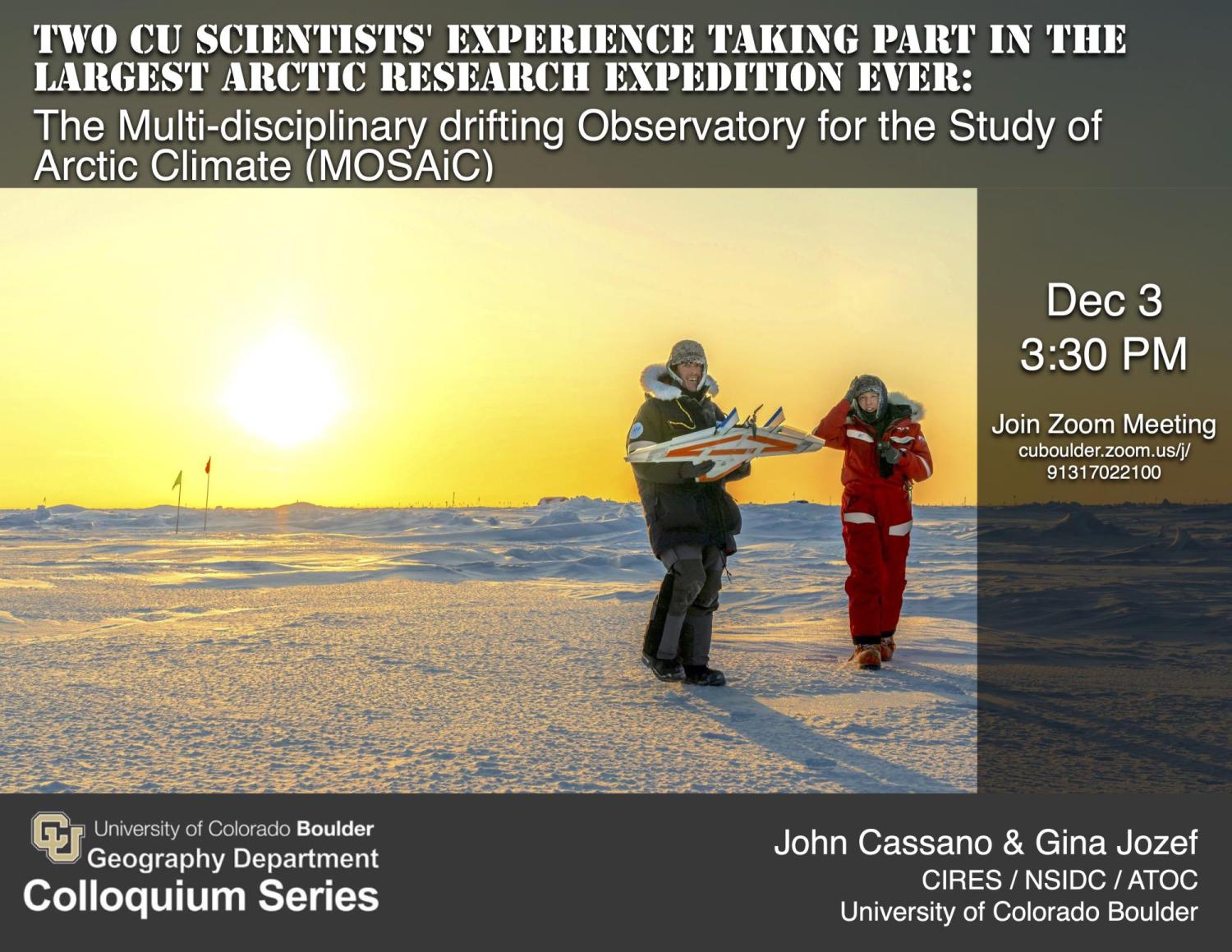Two CU Scientists' Experience Taking Part in the Largest Arctic Research Expedition Ever: The Multi-disciplinary drifting Observatory for the Study of Arctic Climate (MOSAiC)
John Cassano
Fellow, Cooperative Institute for Research in Environmental Sciences
Lead Scientist, National Snow and Ice Data Center (NSIDC)
Professor, Department of Atmospheric and Oceanic Sciences
University of Colorado Boulder
Gina Jozef
PhD Candidate, Department of Atmospheric and Oceanic Science
Cooperative Institute for Research in Environmental Sciences (CIRES)
and National Snow and Ice Data Center (NSIDC)
Dec 3, 2021, Zoom Meeting
The Multi-disciplinary drifting Observatory for the Study of Arctic Climate (MOSAiC) was the largest Arctic research expedition ever, bringing over 500 scientists to the central Arctic to study the polar atmosphere, ocean, sea ice, snow, ecosystems and biogeochemistry. The German icebreaker Polarstern was the base for the MOSAiC expedition and was frozen into the Arctic sea ice, north of Siberia, in October 2019 and allowed to drift across the central Arctic over the next 13 months. Many scientists from the University of Colorado took part in the MOSAiC expedition. In this seminar Prof. John Cassano and PhD candidate Gina Jozef will describe the MOSAiC expedition and its scientific objectives, discuss their analysis of the polar atmospheric boundary layer based on uncrewed aerial system and radiosonde observations and provide a glimpse of what it was like to spend more than 3 months drifting through the polar night and into polar spring in 2020 as the COVID pandemic spread around the world.
Download Printable Colloquium Poster
[video:https://vimeo.com/653763796]


